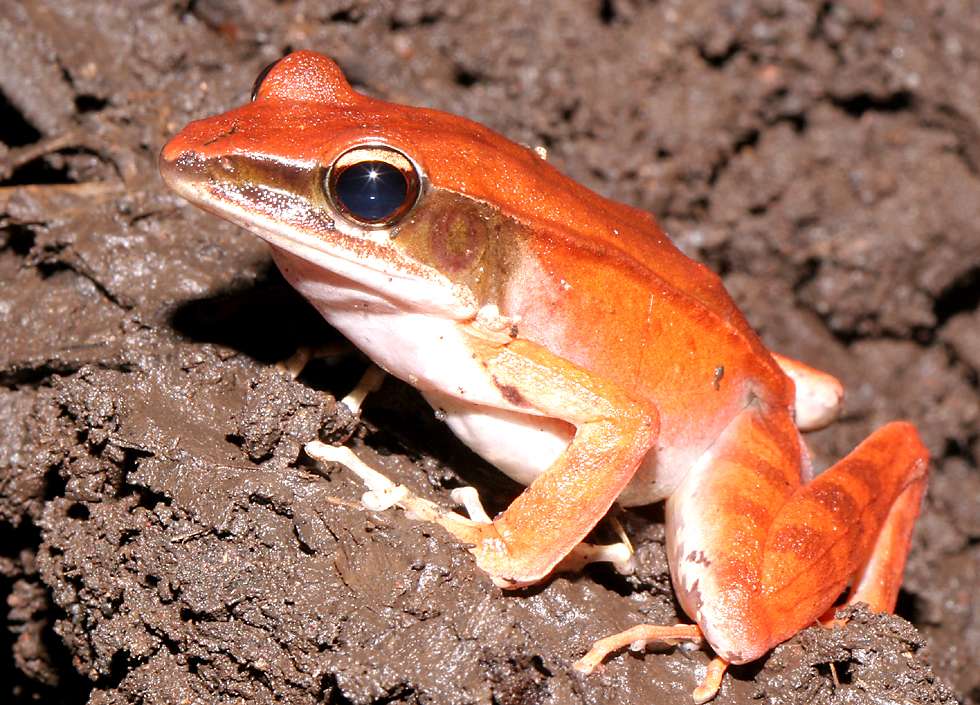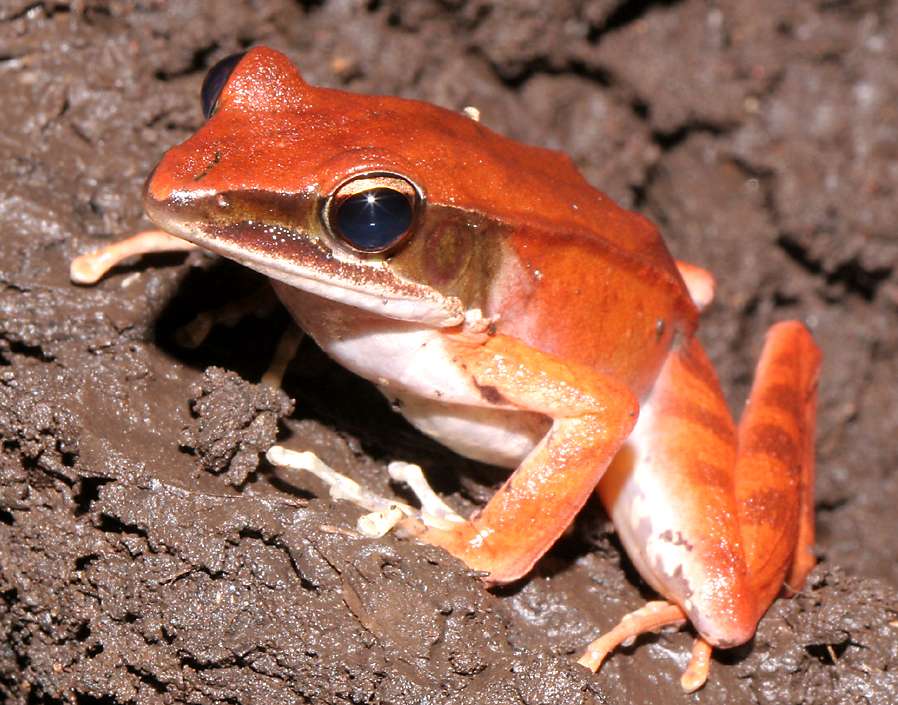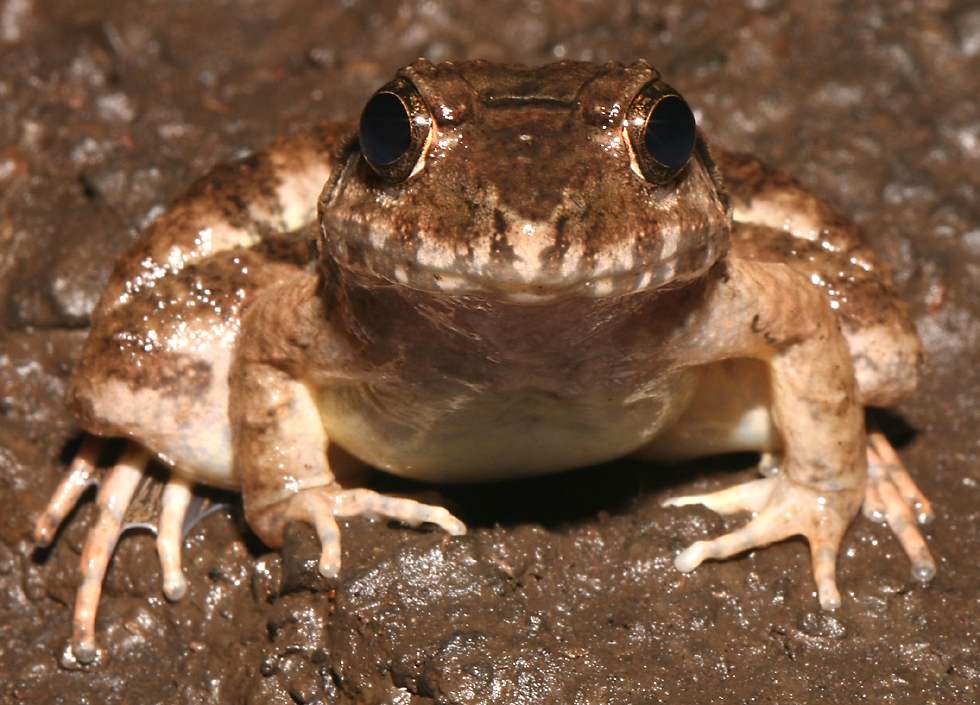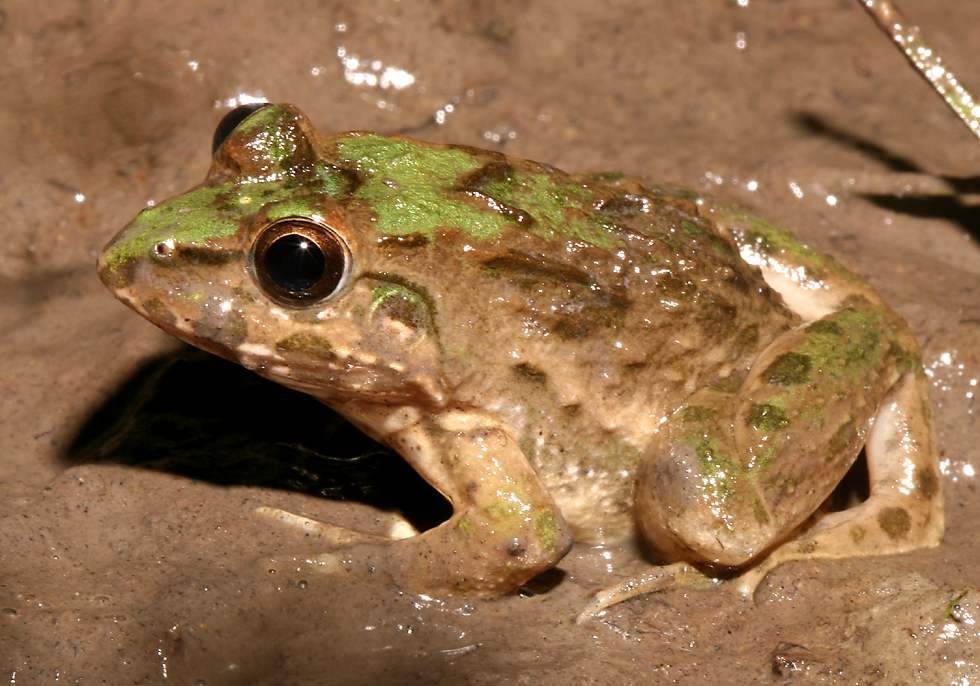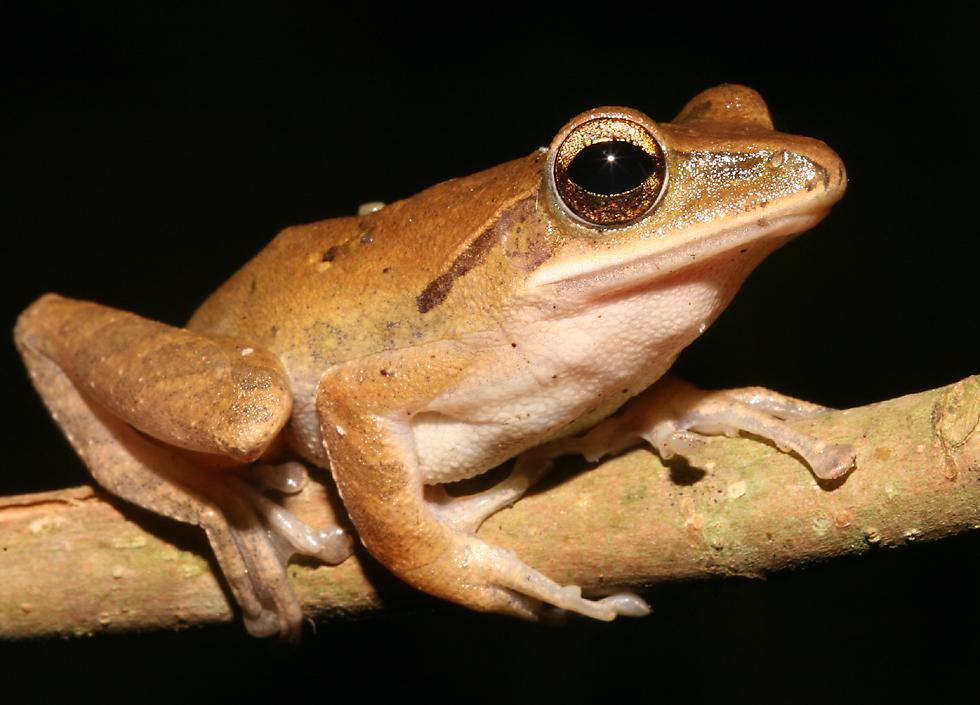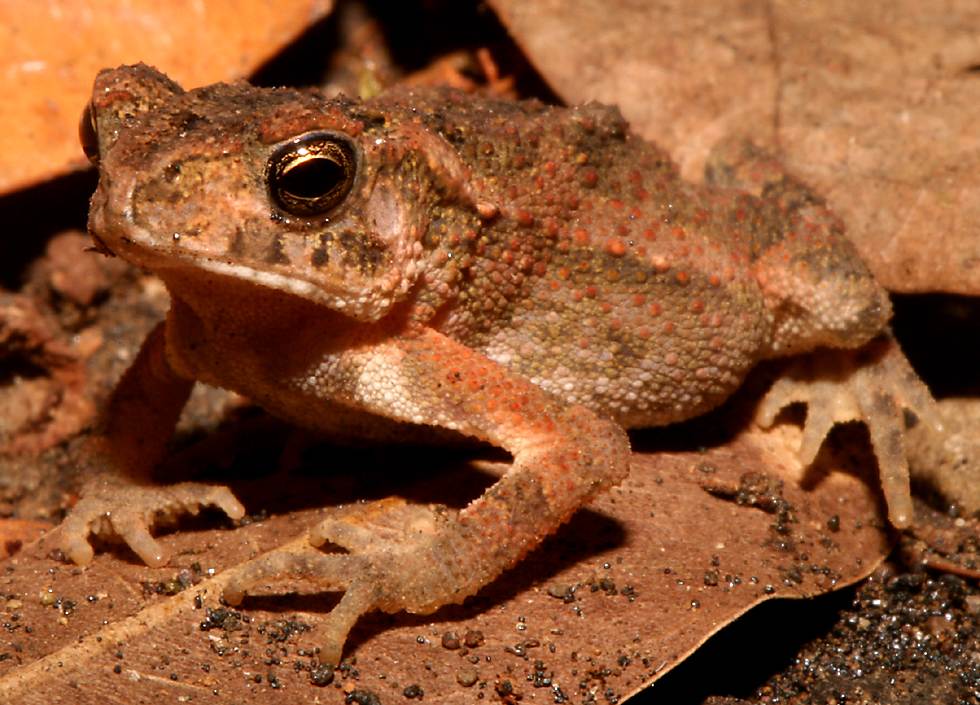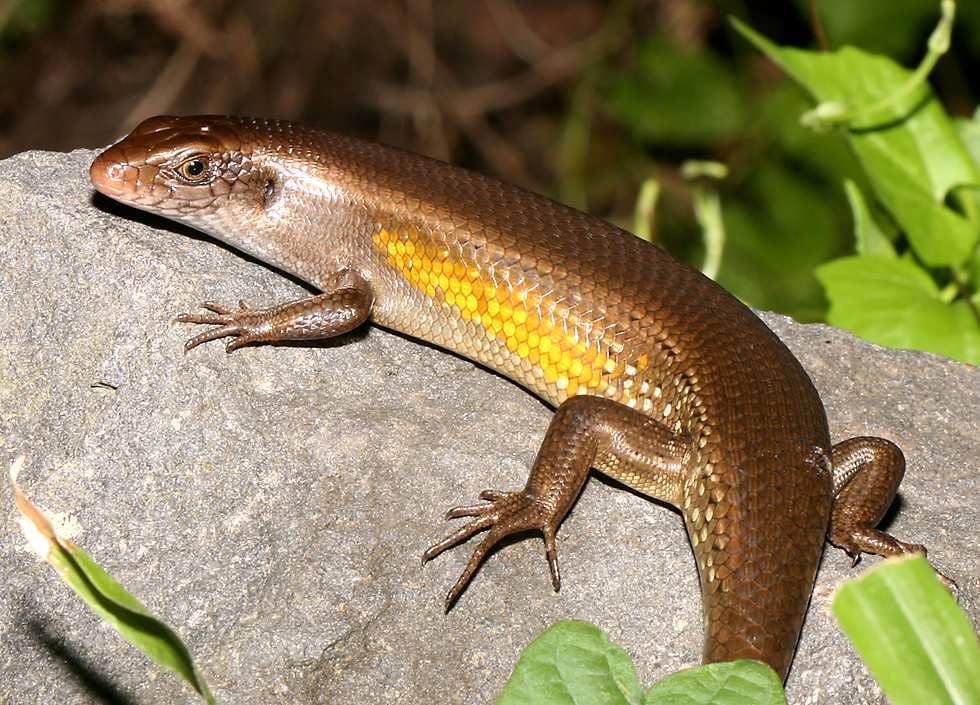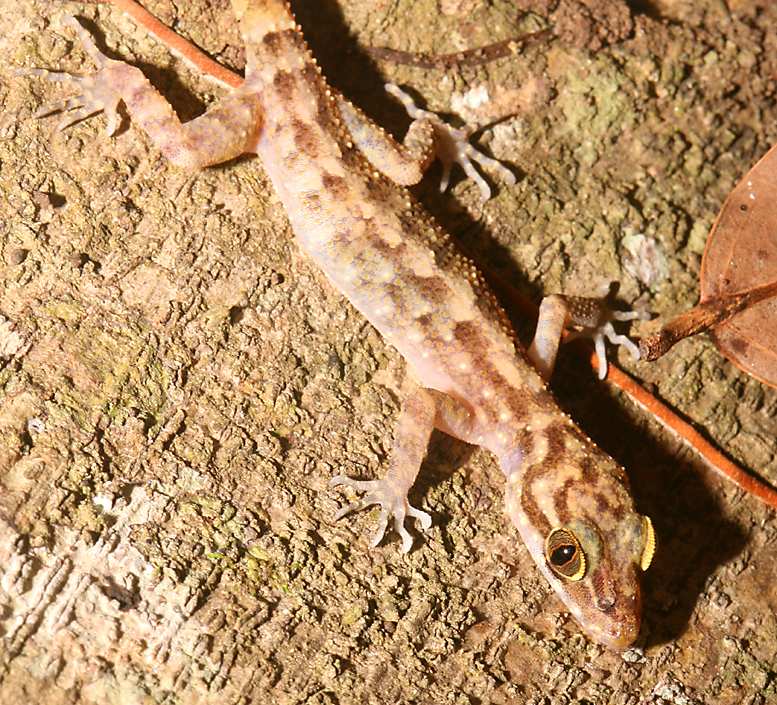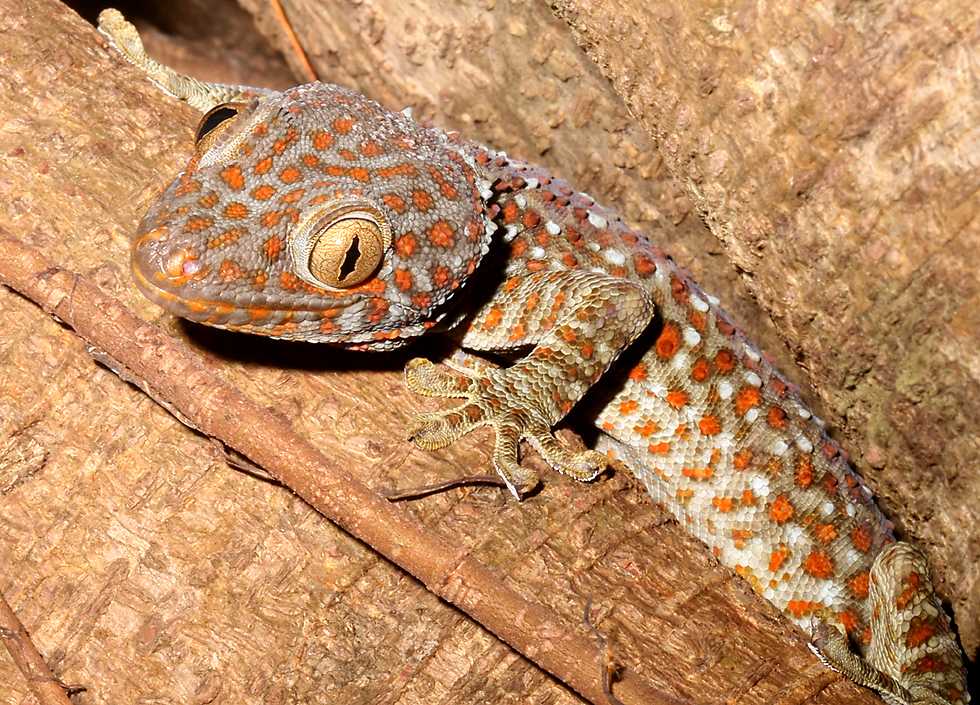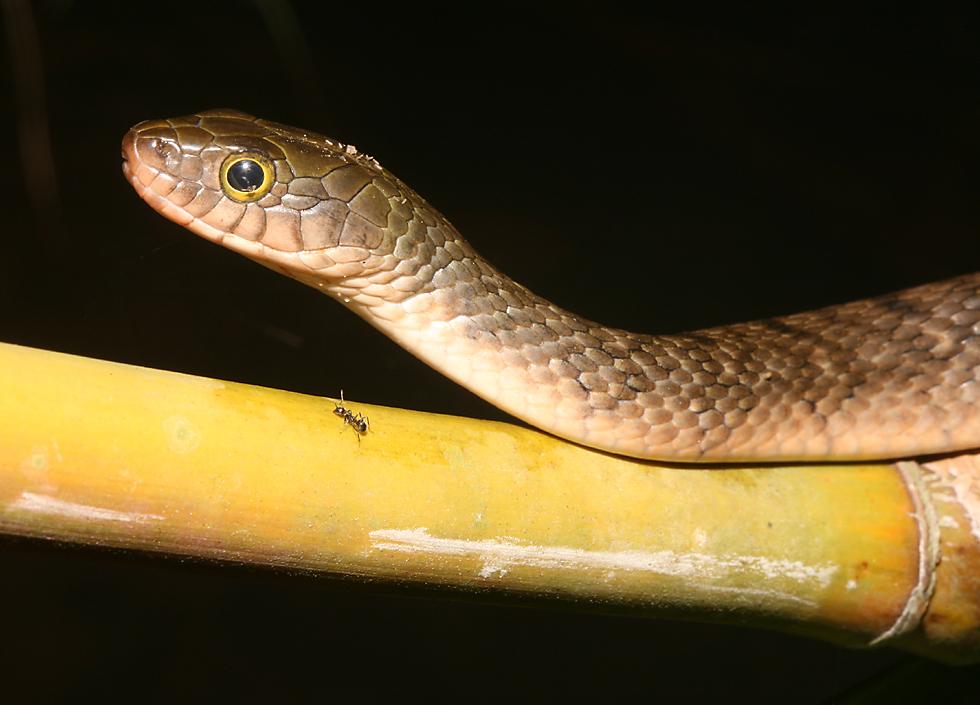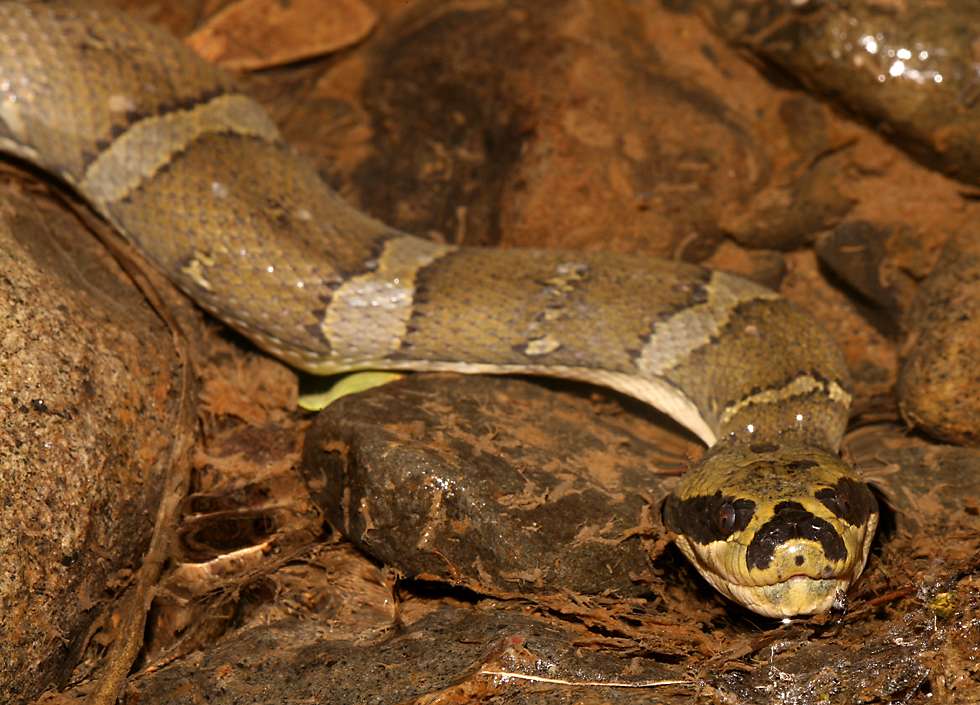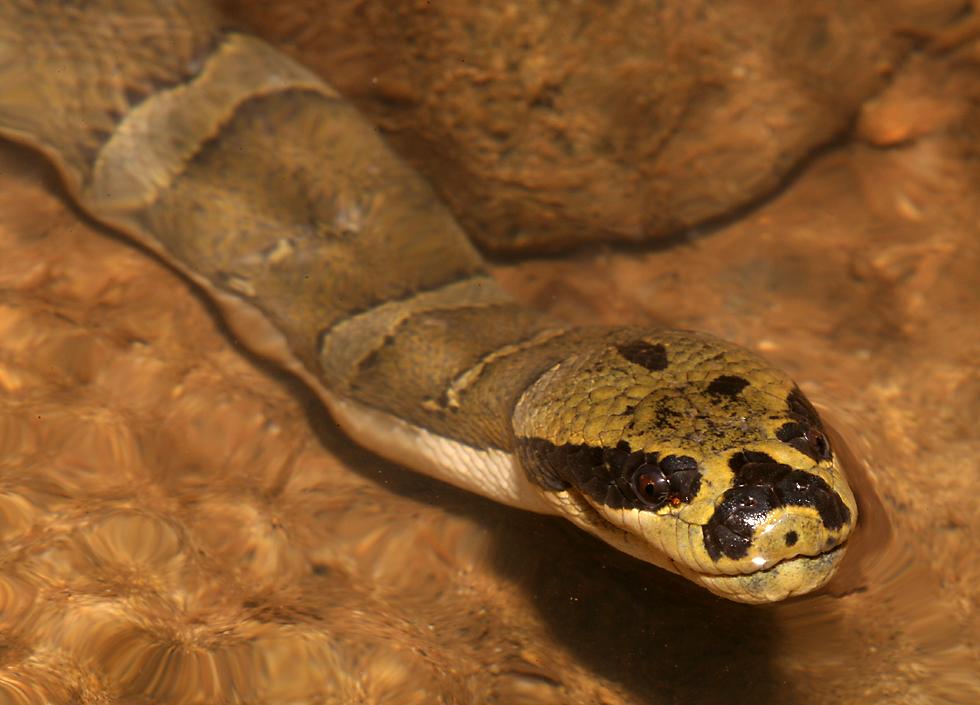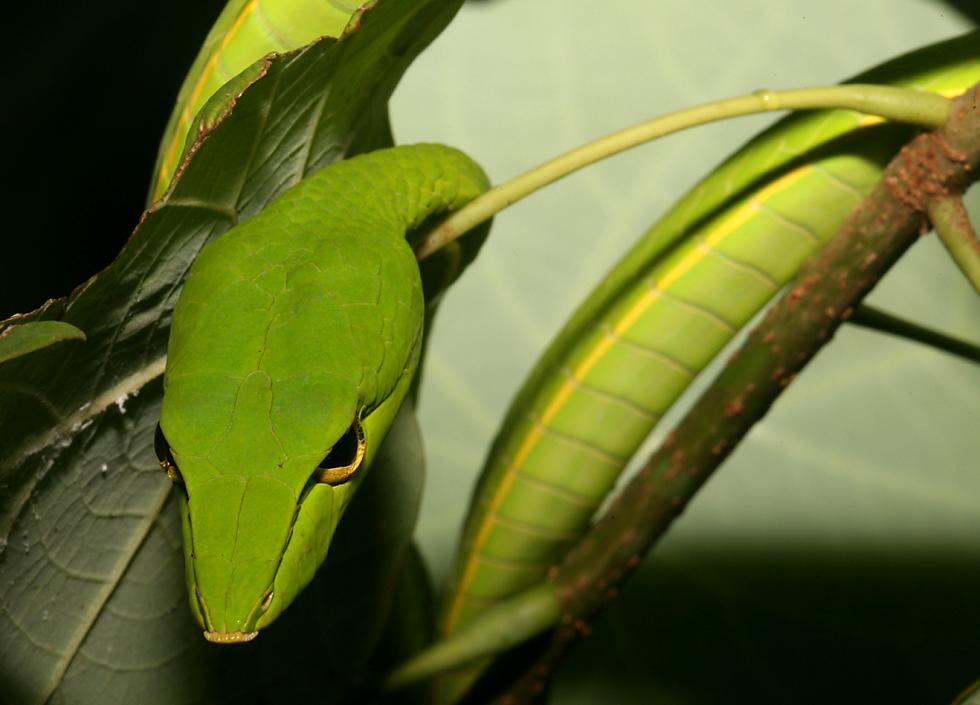Cold-Blooded Animals of Indonesia
|
Such as this sweet looking tree frog, sitting quietly about two meters off the ground in a tree near the edge of the swampy area. |
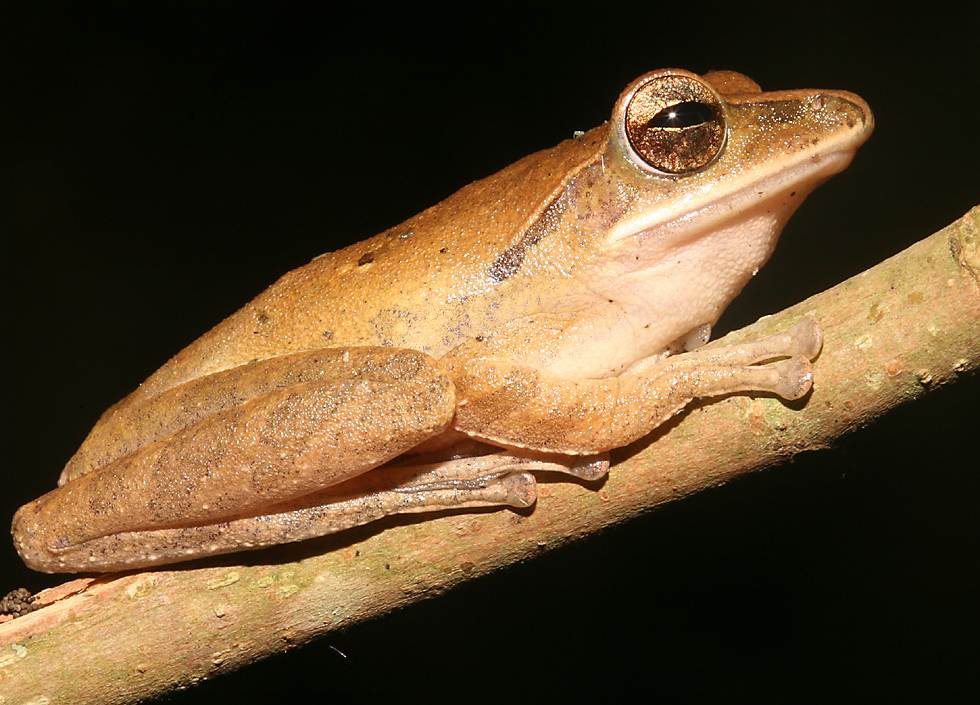 |
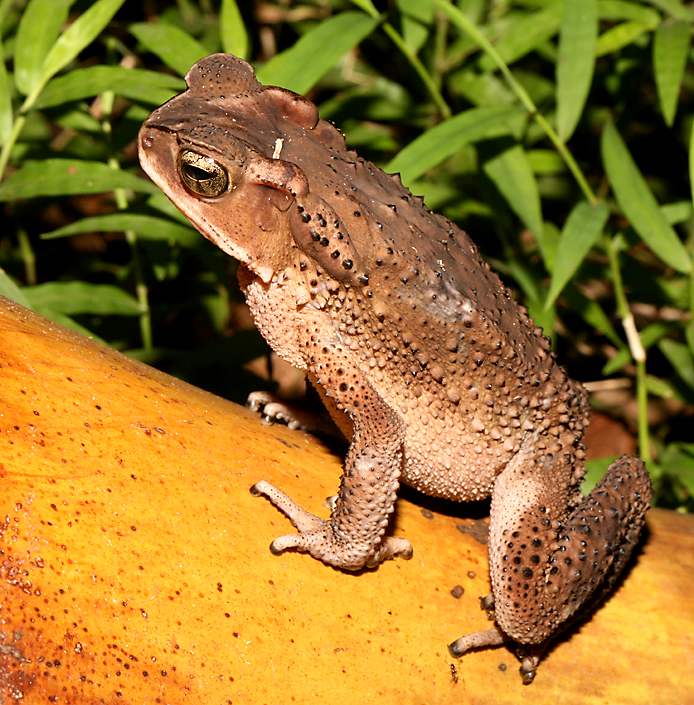
From pretty amphibians to ugly amphibians. Here's a warty-looking toad from Tangkoko, surveying its domain. With some notable exceptions, most of the world's frogs are not poisonous, but toads are almost invariably toxic. The large lumps behind this one's eyes are the poison glands. |
|
I found it in a promising looking bent-over stand of bamboo along a small stream near the losmen where I was staying at the Javan super-attraction of Borobudur. As you can see from the ants beside it, this snake isn't the largest or most threatening one in the world! |
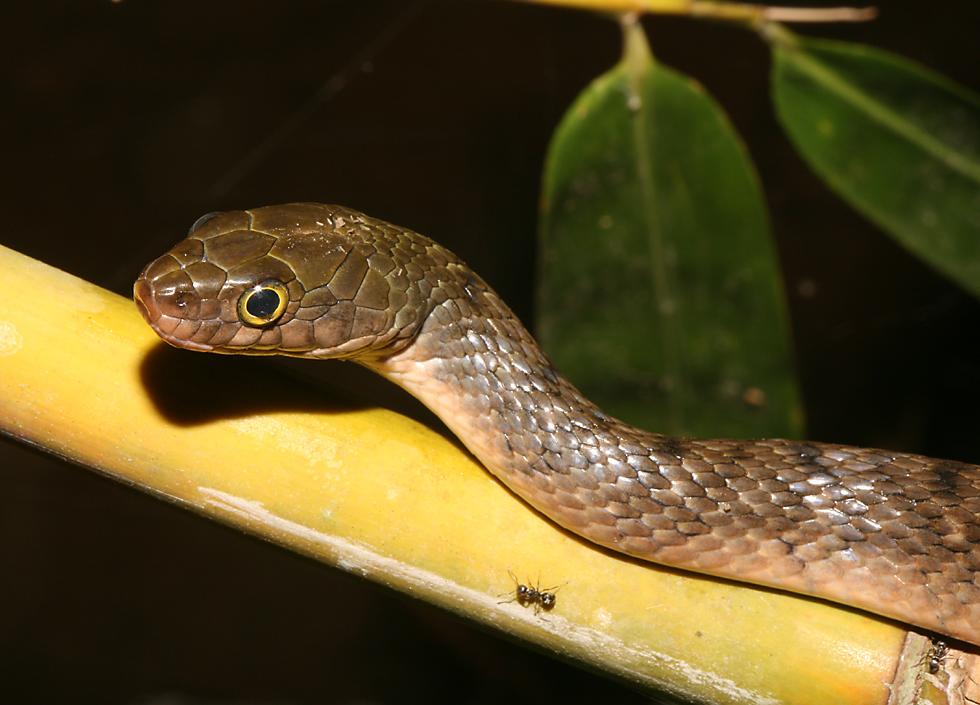
|
